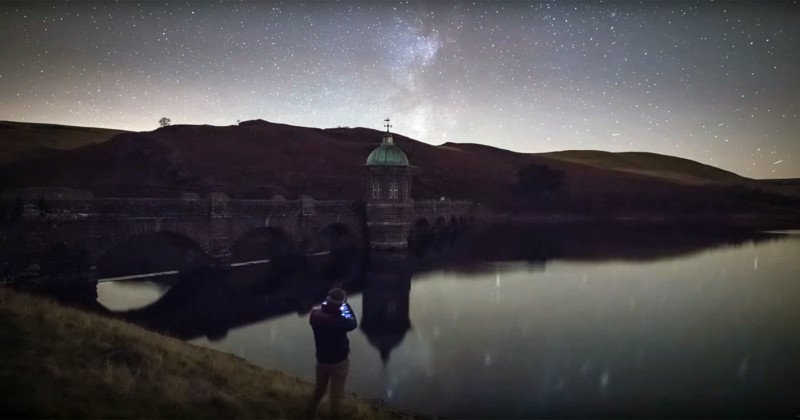
After getting his hands on the new Sigma 14mm f/1.8 Art lens recently, photographer Alyn Wallace decided to take it out into the Elan Valley Dark Sky Park in Wales to put it through its paces. His first test: shooting the Milky Way handheld.
“With the f/1.8 aperture you can let in so much light onto your sensor,” Wallace says. “This is the fastest super-wide-angle lens ever made. Sigma have totally defied the laws of physics to create this lens.”
Wallace went into the dark sky park (one of the darkest places in Wales) with the Sigma 14mm mounted to his Sony a7S II using Sigma’s MC-11 Canon to Sony adapter, which allows the lens to work with Sony’s SteadyShot in-body stabilization.

Wallace ended up shooting a 1-second exposure at f/1.8 and ISO 51200:
The straight-out-of-camera image was very noisy and pretty dark, but after some adjustments and noise-reduction in Lightroom, Nik Dfine, Wallace was surprised by the result.
![]()
“This image turned out way better than I was expecting it to,” Wallace says. “The final image is surprisingly clean. It cleaned up really nice. The detail that’s left even after that aggressive noise reduction is so impressive.
“I think this is a testament to how well this lens resolves detail because noise reduction algorithms are programmed to look for edges and to try and retain detail in those edges by not blurring them and smoothing them out. Because this lens resolves detail so well, the noise reduction software has an easy job of knowing where to do the noise reduction and where not.
After doing his handheld test, Wallace stuck his camera onto a tripod and did further tests to see how well the lens would perform with ordinary use in astrophotography. You can watch those tests and Wallace’s thoughts in the 13-minute vlog at the top of this post.
“In conclusion, the Sigma 14mm f/1.8 Art lens… I can sum it up in three words: it’s a beast,” Wallace says. “It’s a beast in that it’s big and heavy, but it’s a beast in its performance — the sharpness and the detail that it resolves. It’s just second to none. It’s in a league of its own.”
P.S. The Olympus OM-D E-M1 Mark II is another camera that performs well when shooting the Milky Way handheld. We’ve previously shared examples here and here.

